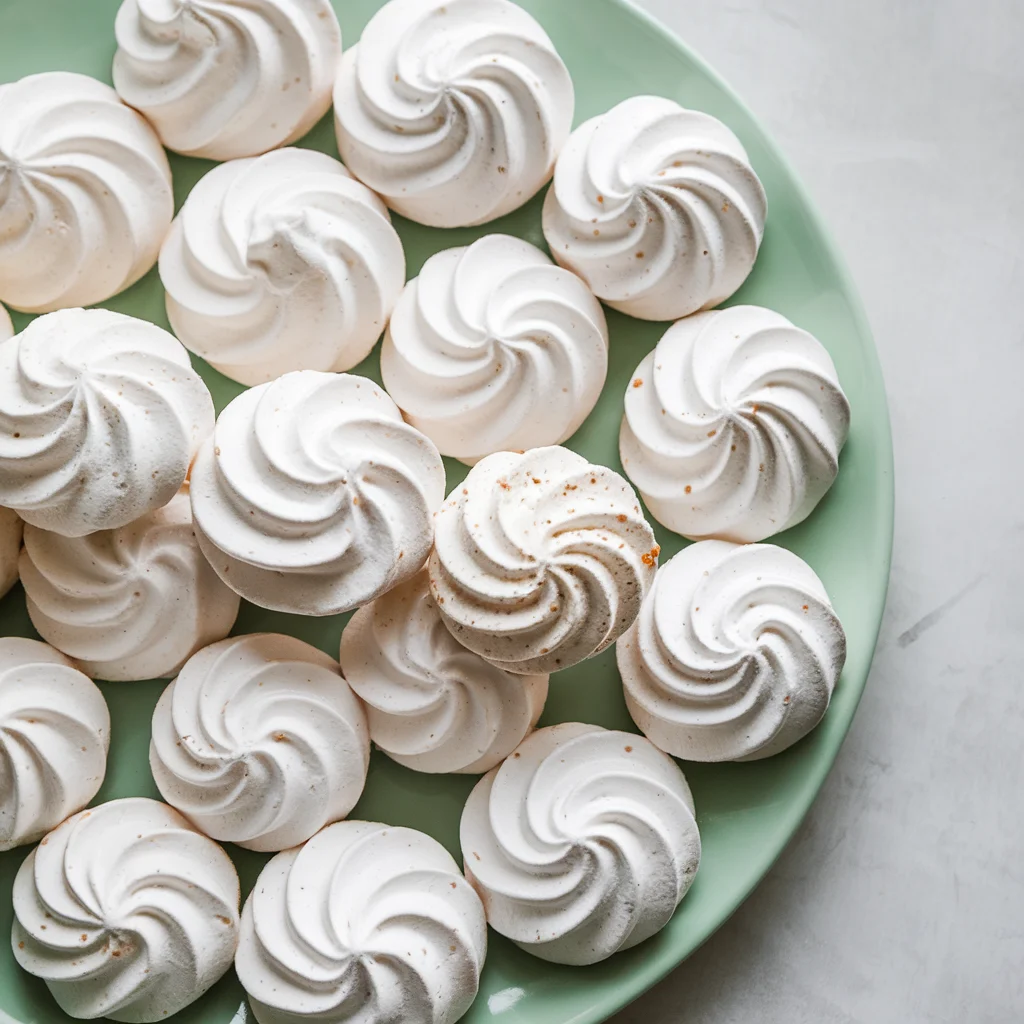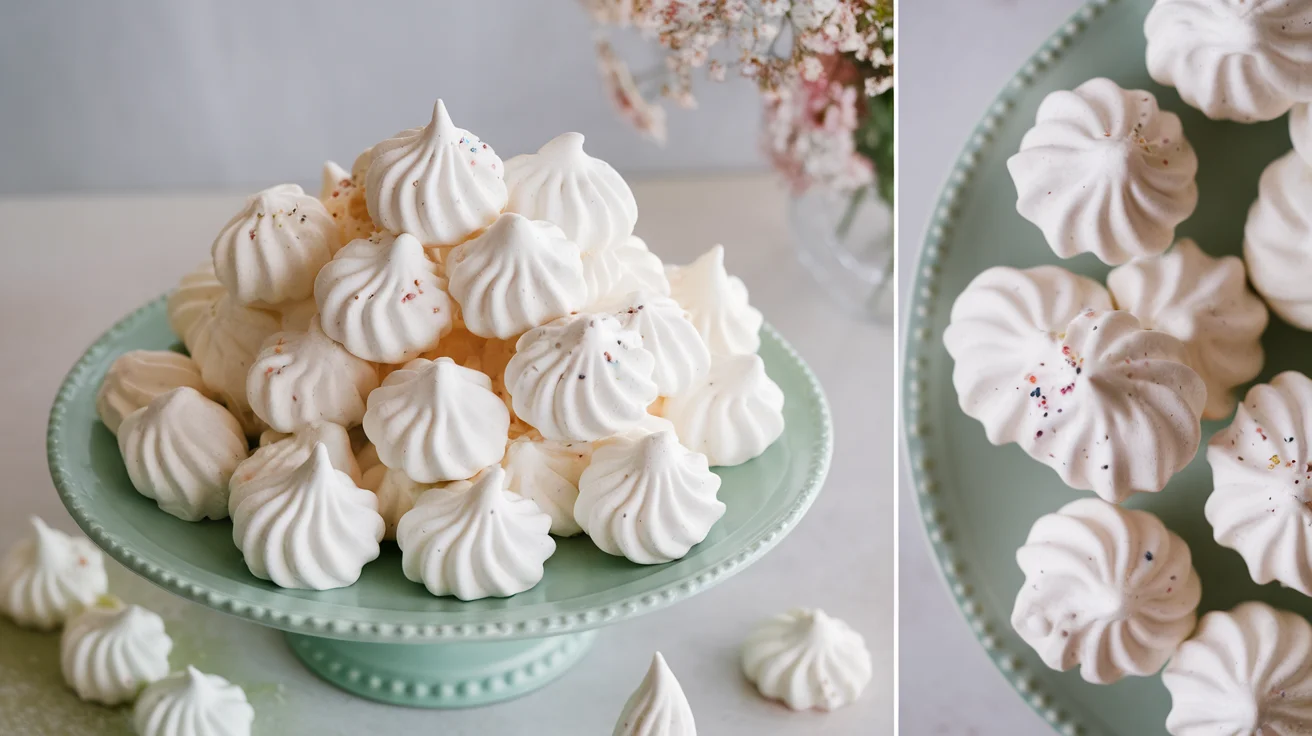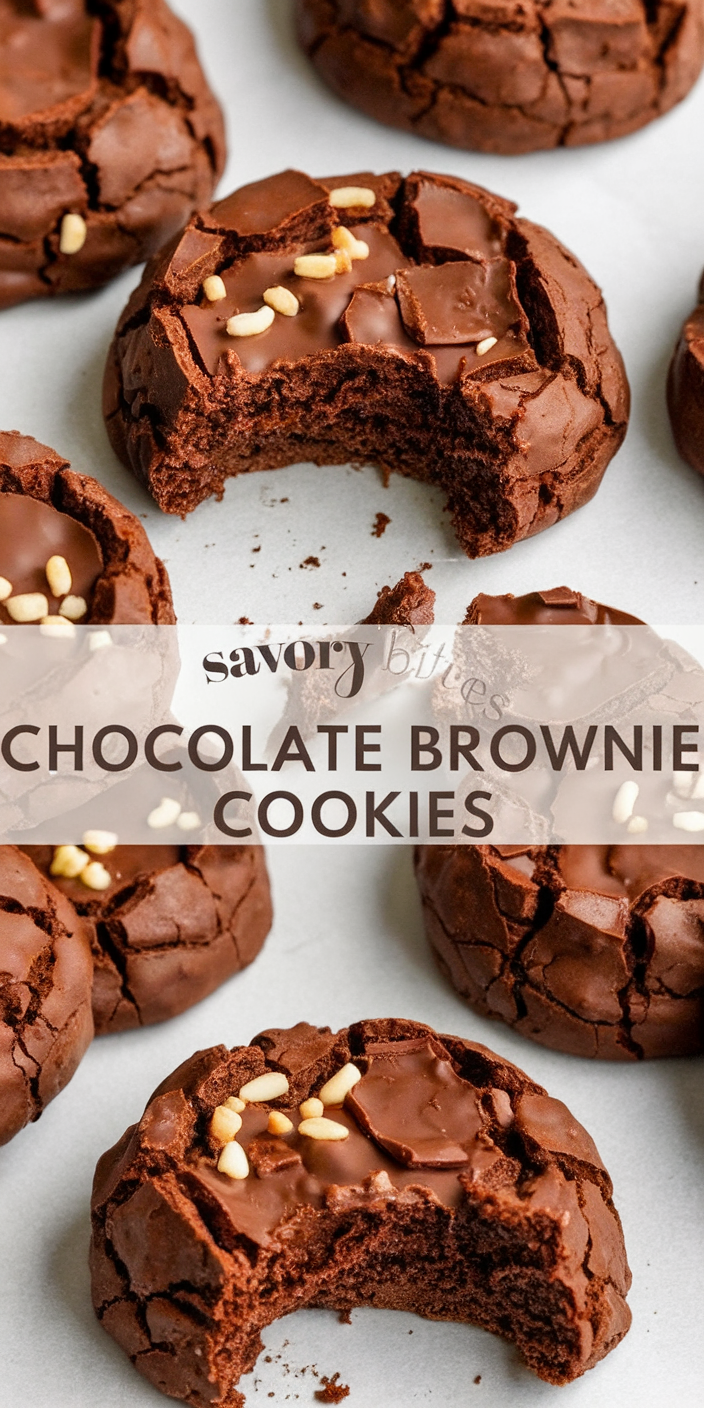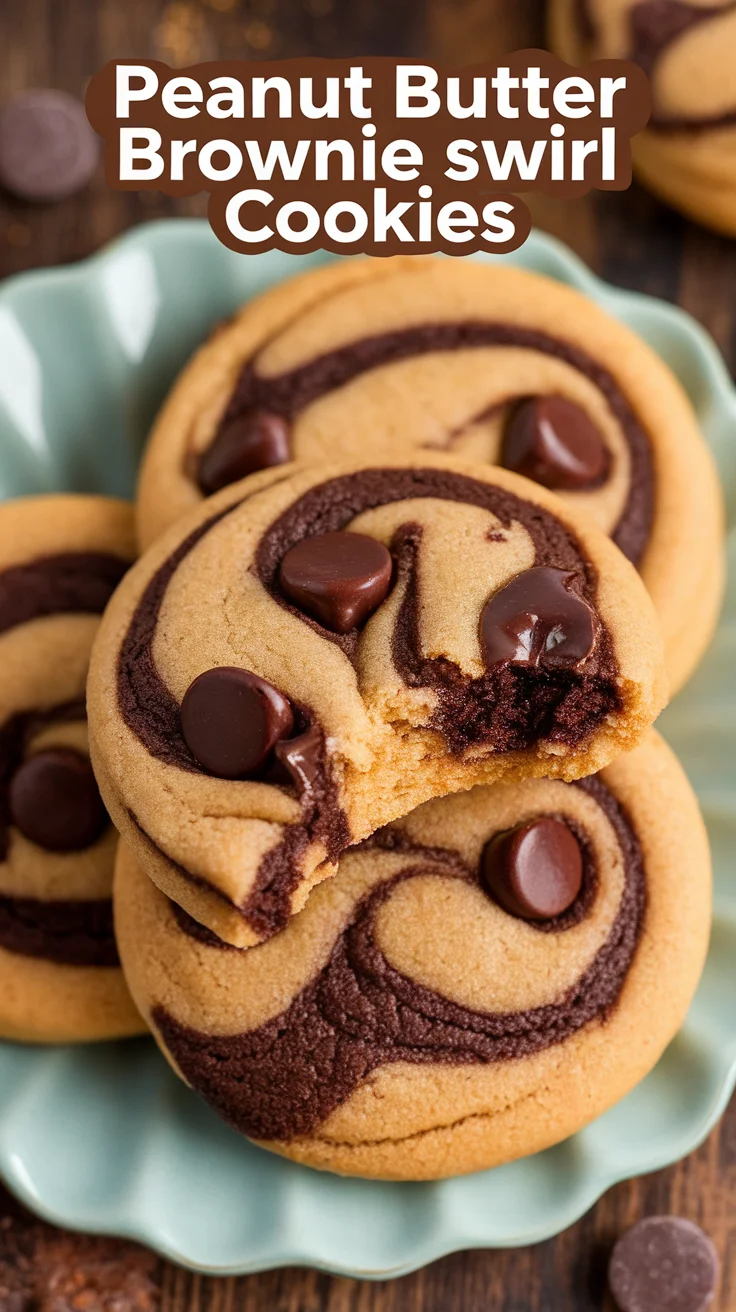Meringues are a delightful treat—light, airy, and sweet—perfect for topping pies, making pavlova, or enjoying on their own as a dessert. Whether you’re looking for the Best Meringue Recipe, need a flawless Meringue Pie Topping, or want to try your hand at Pavlova Dessert, this guide has you covered. With a few simple ingredients and tips for success, you’ll be whipping up Perfect Meringues in no time.
What is Meringue?
Meringue is a dessert or dessert component made primarily from whipped egg whites and sugar. Its light and airy texture makes it versatile for many recipes, from pie toppings to crispy meringue cookies. There are three main types of meringue:
- French Meringue: The simplest method, made by whipping sugar into egg whites.
- Italian Meringue: Made by adding hot sugar syrup to whipped egg whites for a stable and glossy result.
- Swiss Meringue: Prepared by gently heating sugar and egg whites over a double boiler before whipping.
In this recipe, we focus on a classic French meringue, perfect for beginners and easy to customize for your needs.
Ingredients for the Best Meringue Recipe
To create fluffy and stable meringues, you’ll need:
- Egg Whites: 4 large egg whites at room temperature.
- Granulated Sugar: 1 cup (200g) for sweetness and structure.
- Cream of Tartar: ½ teaspoon to stabilize the egg whites.
- Vanilla Extract: 1 teaspoon for flavor (optional).
- Pinch of Salt: To enhance the overall taste.

Step-by-Step Instructions for Perfect Meringues
Step 1: Prepare Your Equipment
Meringues require clean and grease-free equipment to whip properly. Follow these steps:
- Use a stainless steel or glass mixing bowl (avoid plastic as it can retain grease).
- Wash your whisk or beaters thoroughly to ensure there’s no grease or residue.
- Preheat your oven to 225°F (110°C) if baking meringue cookies or preparing crispy pavlova.
Step 2: Separate the Eggs
- Crack each egg and carefully separate the whites from the yolks. Be cautious not to get any yolk into the whites, as this can prevent them from whipping.
- Allow the egg whites to come to room temperature for about 30 minutes. This helps them whip to a higher volume.
Step 3: Start Whipping the Egg Whites
- Place the egg whites in your clean mixing bowl.
- Add a pinch of salt and the cream of tartar.
- Using an electric mixer on medium speed, beat the egg whites until soft peaks form. This means the mixture will hold its shape but still droop slightly when the whisk is lifted.
Step 4: Gradually Add Sugar
- Once soft peaks form, increase the mixer speed to high.
- Slowly add the granulated sugar, 1 tablespoon at a time, allowing it to dissolve before adding more. This process helps stabilize the meringue and create a glossy texture.
- Continue whipping until stiff peaks form. The meringue should be shiny, and the peaks should stand straight when the whisk is lifted.
Step 5: Add Flavor (Optional)
- Gently fold in the vanilla extract or any other desired flavorings, such as almond extract or lemon zest.
- Be careful not to deflate the meringue while mixing.
How to Use Meringue
1. Meringue Pie Topping
Meringue is a classic topping for pies like lemon meringue or key lime pie. Here’s how to achieve a perfect pie topping:
- Spread the meringue over the pie filling, ensuring it touches the edges to seal.
- Use the back of a spoon to create peaks and swirls for a decorative effect.
- Bake at 375°F (190°C) for 10-12 minutes, or until the peaks are lightly browned.
2. Pavlova Dessert
For a stunning pavlova, follow these steps:
- Pipe or spread the meringue onto a parchment-lined baking sheet in a circular shape.
- Bake at 225°F (110°C) for 90 minutes, then turn off the oven and let the meringue cool inside.
- Top with whipped cream and fresh fruit, such as berries, kiwi, or passionfruit.
3. Meringue Cookies
To make crisp and airy meringue cookies:
- Pipe the meringue onto a parchment-lined baking sheet in small dollops or shapes.
- Bake at 225°F (110°C) for 1½ to 2 hours, or until the meringues are dry and easily lift off the parchment.
- Store in an airtight container to keep them crisp.

Dicas para o Sucesso
- Use Ovos Frescos: Fresh egg whites create a more stable meringue with better volume.
- Gradually Add Sugar: Adding sugar too quickly can deflate the egg whites.
- Avoid Overbeating: Overwhipping can cause the egg whites to become grainy and collapse.
- Don’t Skip Cream of Tartar: This ingredient helps stabilize the meringue and prevent it from weeping.
- Bake Low and Slow: Meringues require a low oven temperature and longer baking time to dry out without browning.
Variations and Additions
- Chocolate Swirl Meringues: Gently fold melted chocolate into the whipped meringue for a marbled effect.
- Lemon Meringue: Add a teaspoon of lemon zest and a few drops of lemon juice for a zesty flavor.
- Almond Meringues: Mix in finely chopped almonds or almond extract for a nutty twist.
- Colorful Meringues: Use a drop of food coloring to create festive or themed meringue cookies.
Common Meringue Problems and How to Fix Them
- Weeping or Beading: Occurs when the meringue isn’t fully cooked or sugar isn’t properly dissolved. Ensure you bake at the right temperature and add sugar gradually.
- Collapsed Meringue: Can happen if egg whites are overbeaten or deflate during mixing. Stop whipping as soon as stiff peaks form.
- Sticky Meringue: Results from humidity. Make meringues on dry days and store them in airtight containers.
Perguntas Frequentes
1. Can I make meringue ahead of time?
Yes, you can bake meringue cookies or pavlova shells in advance. Store them in an airtight container at room temperature for up to 2 weeks.
2. Can I freeze meringue?
Baked meringue doesn’t freeze well as it can become soggy when thawed. However, unbaked meringue mixtures should be used immediately.
3. Why didn’t my meringue whip up?
This could be due to grease or yolk in the egg whites. Always ensure your equipment is clean and separate eggs carefully.
4. How do I know when meringue is done baking?
Meringue is done when it easily lifts off the parchment and feels light and crisp.
5. Can I make meringue without cream of tartar?
Yes, but it may not be as stable. A small amount of lemon juice or vinegar can be used as a substitute.
Nutrition Information (Per Serving)
- Calories: 50
- Protein: 1g
- Carbohydrates: 12g
- Fat: 0g
- Fiber: 0g
Conclusão
Mastering the art of making meringue is easier than you might think. This Easy Meringue Recipe provides a foundation for a variety of desserts, from a classic Meringue Pie Topping to elegant Pavlova Desserts. With just a few simple ingredients and the right techniques, you’ll achieve fluffy, glossy, and delicious meringues every time.
Whether you’re looking for the Best Meringue Recipe, a quick dessert topping, or creative ways to impress your guests, this recipe is your go-to guide. Try it today and let the sweet magic of meringue transform your dessert game!


